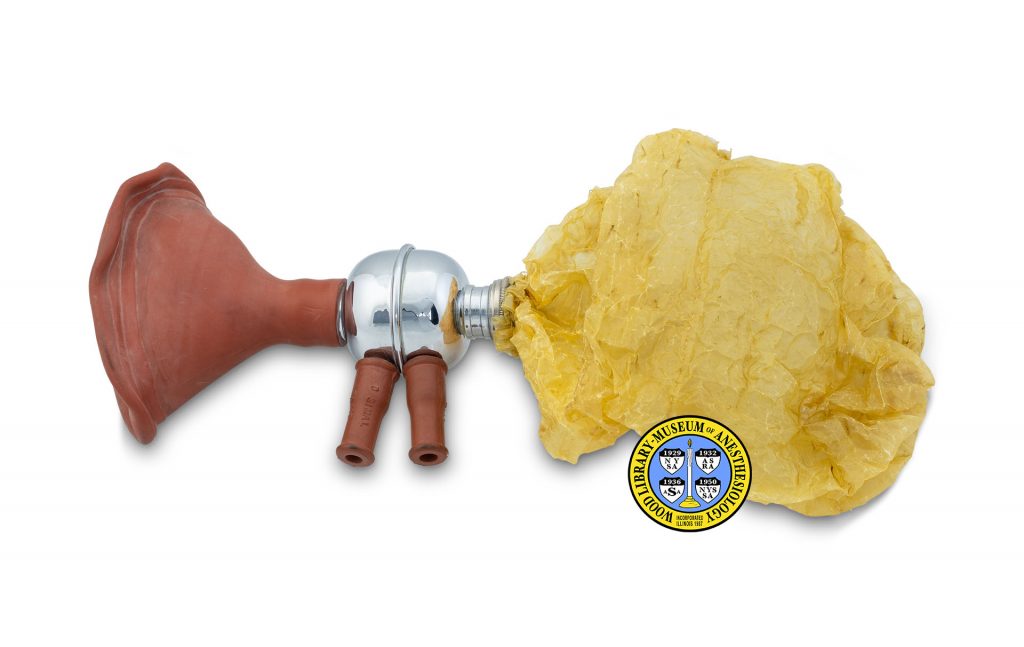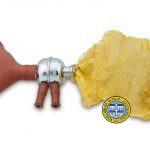Camus Inhaler
The man-made liquid, ethyl chloride, is primarily used to cool the skin and provide pain relief at the site. From the late 19th to the mid-20th centuries it also had a vogue as a quick induction agent for general anesthesia. Lucien Camus, M.D., was a French physiologist. He introduced his ethyl chloride inhaler in 1906. Keeping the mask over the patient's nose and mouth, the operator held the reservoir in one hand, warming the ethyl chloride and increasing its rapid evaporation.
Built both to exclude fresh air and to return his exhaled carbon dioxide to the patient, it was intended only for use during short procedures. It was recommended in several textbooks, including one co-authored by the French Surgeon, Theodore Tuffier. He described the patient's struggles under Camus' inhaler: "After 4 to 5 irregular and jerky breaths, also a short period of apnea, calm is restored, respiration becomes deep and regular, and the subject snores deeply".
The example shown here was made by the Parisian instrument company, D. Simal. It was probably intended for use in a French field hospital during World War II.
Catalog Record: Camus Inhaler Contact [email protected]g for catalog record.


